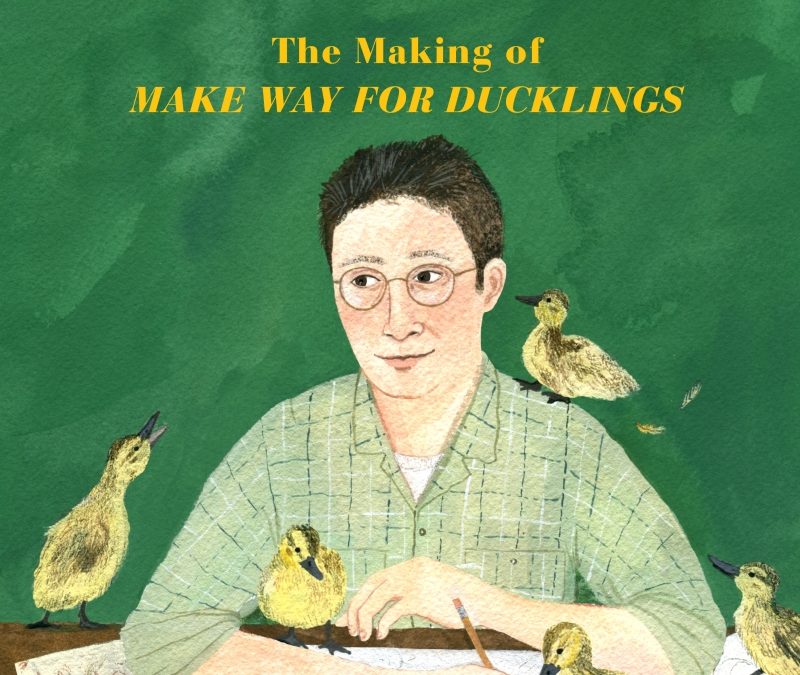Mr. McCloskey’s Marvelous Mallards: The Making of MAKE WAY FOR DUCKLINGS written by Emma Bland Smith, illustrated by Becca Stadtlander; Calkins Creek/Astra Books for Young Readers, 2022.
Focusing on the creation of his beloved Caldecott Award-winning Make Way for Ducklings, this engaging picture book biography brings to life Robert McCloskey’s perseverance, creativity, and humor.
You can’t draw ducks unless you live with them.~ Robert McCloskey
Why this Book? Why will it matter to kids?
For a picture book biography to grab the attention of young readers and listeners, it must connect the subject’s experiences to their own while also illuminating the special qualities that set the subject apart. Author and librarian Emma Bland Smith and illustrator Becca Stadtlander adeptly portray Robert McCloskey’s desire to “do better” and the diligence that led him to create this iconic tale as well as a shelf of other classic picture books that children continue to enjoy today.
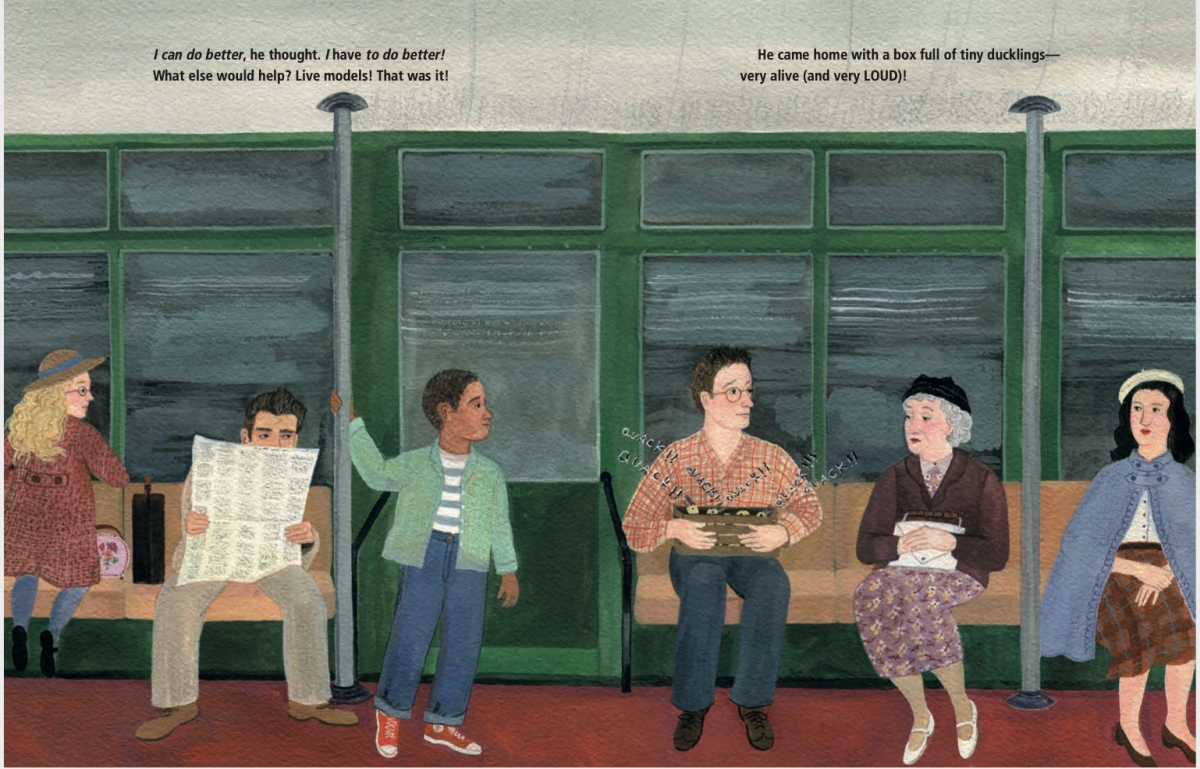
Illustration © Becca Stadtlander
Levels and Layers of Learning
Grade level: 3-5
Social-Emotional Learning Themes
Courage, creativity, dedication, diligence, effort, encouragement, empowerment, fortitude, gratitude, helpfulness, hope, inspiration, integrity, perseverance, persistence, perspective, resilience, resourcefulness, respect, responsible decision-making, self-assurance, self-awareness, self-management, self-reliance, tenacity, understanding
Content Area Connections: ELA, Art, Science
Using This Book in the Classroom
Hit the Ground Running Ready Resources for Educators, Homeschoolers, and Parents
Read Make Way for Ducklings.
Check out Mr. McCloskey’s Marvelous Mallards Discussion Guide.
Read through the extensive back matter in Mr. McCloskey’s Marvelous Mallards, which includes a note from Jane McCloskey, daughter of Robert McCloskey; an author’s note; information about McCloskey’s editor, May Massee; a list of McCloskey’s books; important dates in his life; captioned photos; and a bibliography.
Learn more about Emma and her books.
Write Away! Ideas to prompt writing
Robert McCloskey kept telling himself, “I can do better. I have to do better!” as he worked for years on creating Make Way for Ducklings. Write about a time when you kept working on something until you were satisfied that it was your best. Tell about your feelings while working on the project and how you felt once you completed it, and tell how and why you kept at it.
Author Emma Bland Smith writes that it took Robert McCloskey “six years, buckets of patience, a good supply of erasers, and a studio full of spirited ducks” to get Make Way for Ducklings just the way he wanted it. Return to a writing piece or a piece of art you think can be better. Work on it some more (though maybe not for six years!).
Author Emma Bland Smith says, “McCloskey didn’t succeed despite failing—he succeeded because of it. Every time he decided that his drawings weren’t good enough, he stopped and thought, he took time, and found a way to work harder, go further, and make the illustrations better.” Which is your favorite illustration in Make Way for Ducklings? Which is your favorite illustration in Mr. McCloskey’s Marvelous Mallards? Why?
Compare and contrast a few of Robert McCloskey’s picture books. How are they alike? How are they different? Which is your favorite? Why?
Poetry Break Related poetry to recite before or following the reading of this book
Poetry breaks fit perfectly into brief moments in the school day—from opening or closing exercises to lining up for lunch; from zipping up backpacks and jackets to transitioning from one subject to the next. Reading a poem typically takes less than a minute; yet, it can introduce or reinforce a concept, provide clarity, celebrate language, exemplify rhythm, enhance vocabulary, expand understanding of a concept, increase attention span, initiate reflection, spark imagination, or simply summon a giggle. And, poetry soothes and strengthens the spirit.
The following poetry books offer poems celebrating words, writing, and creators :
- In the Land of Words: New and Selected Poems by Eloise Greenfield, illustrated by Jan Spivey Gilchrist
- Out of Wonder: Poems Celebrating Poets by Kwame Alexander with Chris Colderley and Marjory Wentworth, illustrated by Ekua Holmes
- Read A Rhyme, Write A Rhyme poems selected by Jack Prelutsky, illustrated by Meilo So
- Wonderful Words: Poems About Reading, Writing, Speaking, and Listening selected by Lee Bennett Hopkins, illustrated by Karen Barbour
- Write! Write! Write! poems by Amy Ludwig VanDerwater, illustrated by Ryan O’Rourke (Find a post on this book elsewhere on this blog.)
And Then There’s This…
Enrichment activities, related books, online resources, craft projects, and ideas for further study
Learn more about Robert McCloskey and the making of Make Way for Duckings in A Caldecott Celebration: Seven Artists and Their Paths to the Caldecott Medal by Leonard S. Marcus, which includes a sampling of McCloskey’s sketches, color study, detailed drawings, and more. See also, Show Me a Story!: Why Picture Books Matter: Conversations with 21 of the World’s Most Celebrated Illustrators by Leonard S. Marcus.
Author Emma Bland Smith suggests using Mr. McCloskey’s Marvelous Mallards as a model for creating art. She says, “I grew up taking art classes where we drew a lot from life—going out into nature, for example—and I think perhaps teachers could use this book to teach that practice.”
Look at the full-page spread depicting McCloskey’s attempts at drawing ducks. Now it’s your turn! Try drawing ducks as McCloskey did. Or, choose another animal. If you have a pet, observe its behavior, just like Robert McCloskey did with the ducks he brought home, and then draw!
Read Ducks on Parade! edited by Nancy Schön, the artist who created the famous sculpture located in the Public Garden in Boston, Massachusetts in 1987. Enjoy the photographs! If you were dressing the ducks, what costumes would you give them? Why?
Related Books of Interest:
The following picture book biographies explore the lives and accomplishments of children’s book creators and other authors and poets.
- A Most Clever Girl: How Jane Austen Discovered Her Voice by Jasmine A. Stirling, illustrated by Vesper Stamper
- Beatrix Potter, Scientist by Lindsay H. Metcalf, illustrated by Junyi Wu
- The Boy on Fairfield Street: How Ted Geisel Grew Up to Become Dr. Seuss by Kathleen Krull, illustrated by Steve Johnson and Lou Fancher
- Carl Sandburg: Adventures of a Poet by Penelope Niven with Poems and Prose by Carl Sandburg, illustrated by Marc Nadel
- Dr. Seuss: The Great Doodler by Kate Klimo, illustrated by Steve Johnson and Lou Fancher
- Enormous Smallness: A Story of E. E. Cummings by Matthew Burgess, illustrated by Kris DiGiacomo
- The Fabled Life of Aesop by Ian Lendler, illustrated by Pamela Zagarenski
- One Fun Day with Lewis Carroll: A Celebration of Wordplay and a Girl Named Alice by Kathleen Krull, illustrated by Júlia Sardà
- Papa Is a Poet: A Story About Robert Frost by Natalie S. Bober, illustrated by Rebecca Gibbon
- A Poem for Peter: The Story of Ezra Jack Keats and the Creation of THE SNOWY DAY by Andrea Davis Pinkney, illustrated by Steve Johnson and Lou Fancher
- A River of Words: The Story of William Carlos Williams by Jen Bryant, illustrated by Melissa Sweet; Caldecott Honor
- Some Writer: The Story of E. B. White by Melissa Sweet
- A Story Is to Share: How Ruth Krauss Found Another Way to Tell a Tale by Carter Higgins, illustrated by Isabelle Arsenault
- Walt Whitman: Words for America by Barbara Kerley, illustrated by Brian Selznick
- Will’s Words: How William Shakespeare Changed the Way You Talk by Jane Sutcliffe, illustrated by John Shelley
Meet the Author
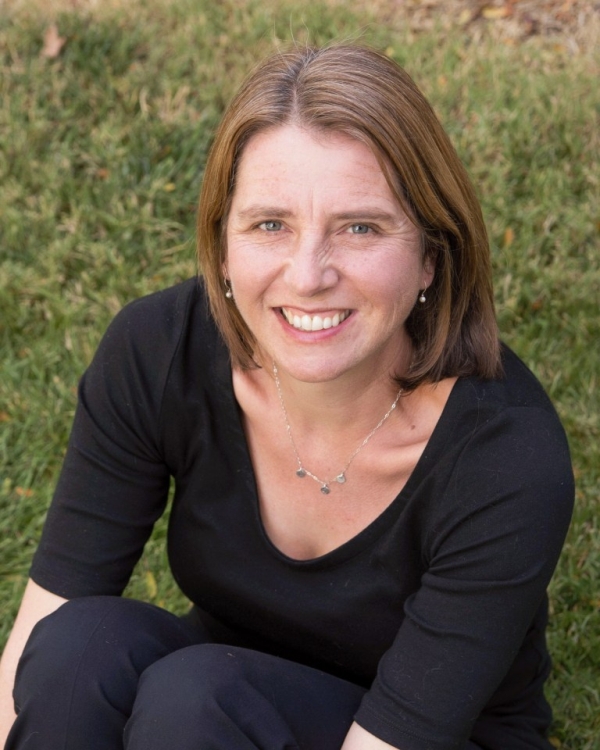
Emma Bland Smith
Emma Bland Smith is a public librarian and the author of many books for children. She writes mostly nonfiction picture books, and her latest include Mr. McCloskey’s Marvelous Mallards: The Making of Make Way for Ducklings, How Science Saved the Eiffel Tower, and The Gardener of Alcatraz. Her books have received starred reviews, Junior Library Guild honors, and awards such as the Bank Street College Cook Prize. Emma lives in San Francisco with her husband and their two teenagers. Although she has written about wolves, alligators (see cover image below), and rambunctious ducklings, her only pets are a rather tame but still marvelous dog and cat. Learn more and connect here.
Backstory: Q & A with Emma Bland Smith
I have enjoyed getting to know Emma Smith and her books since discovering Mr. McCloskey’s Marvelous Mallards. I am pleased to introduce her to you here at the Children’s Book Corner. I know you will find her to be as charming and knowledgeable as I have.
Judy Bradbury: Tell us about this project: how you became interested in writing a children’s picture book biography of Robert McCloskey, its purpose, how you gathered information, and how you decided to spotlight Make Way for Ducklings among his many classic books.
Emma Bland Smith: There are more and more picture book biographies about authors out there, so I began to think about my favorite authors and whether they would make good subjects. Like many of us, I had always loved Robert McCloskey’s books, and I was interested in him as a person. I was excited when I realized that no one had yet written a picture book bio of McCloskey. The big moment, however, came when I read about a truly hilarious anecdote involving his living with a whole bunch of ducklings in order to perfect the illustrations for Make Way for Ducklings. Most backstories about writing are quite uneventful, so I felt like I had hit gold with this story. From there, I sought out primary and secondary sources, got everything I could from libraries all over the country, and even connected with McCloskey’s daughter, Jane.
JB: In her craft book, Writing Picture Books, Ann Whitford Paul suggests that authors focus on a general question they’re trying to unravel in their story. What is the question your story considers, or what do you hope readers will take away from Mr. McCloskey’s Marvelous Mallards: The Making of MAKE WAY FOR DUCKLINGS?
EBS: There are really two levels on which you can read this book. One is just sheer comedy. The scenes of the tiny ducklings taking over McCloskey’s studio, which Becca Stadtlander brought so wonderfully to life, are so funny and I hope that child readers will enjoy them. The other throughline, though, is seeing how McCloskey’s determination and persistence, and his repeated failures, were such an integral part of his process. He didn’t succeed despite failing—he succeeded because of it. Every time he decided that his drawings weren’t good enough, he stopped and thought, he took time, and found a way to work harder, go further, and make the illustrations better. I hope that kids will take that to heart. It’s a message we all need to internalize!
JB: Tell about one hurdle you experienced in the creation of Mr. McCloskey’s Marvelous Mallards, or provide a memorable (or humorous!) anecdote related to the writing of the book.
EBS: One hurdle was finding photos for the back matter. I read in several places that a photographer from Life magazine had photographed McCloskey in his studio, with ducklings climbing on him. I was desperate to find these photos, which ended up not running in Life. Sadly, they never materialized. (I still hold out hope they’re out there somewhere!)
As for a funny anecdote, McCloskey talked in his Caldecott speech about how in order to slow down the ducklings, he gave them red wine to drink. Obviously, I chose not to include this detail in my book—and I’d like to believe that today, in these more enlightened times, he would not have done that! (I do think he was fond of the ducklings.)
JB: What would surprise readers to learn about you or about the writing of Mr. McCloskey’s Marvelous Mallards?
EBS: I think readers might be surprised to learn how much of McCloskey’s books are based on his life. His first book, Lentil, was set in a town much like his Ohio hometown. Make Way for Ducklings was of course inspired by his time in Boston. All of his later books were written and illustrated on the island in Maine where he lived with his family. His wife was the model for the mom in Blueberries for Sal. Sal and Jane (Jane appeared in One Morning in Maine) were his real-life daughters. Even the dog in One Morning in Maine was their real-life dog, Penny,! I find something very charming and fascinating about that.
JB: What is your favorite illustration in the book, and why?
EBS: It’s a tie between the spread showing McCloskey on the subway holding the wooden crate full of ducklings, and the illustration of the ducks in the bathtub, splashing and making a huge mess. I love both of these because they were directly inspired by funny anecdotes that I found in the archives. McCloskey actually made a little sketch of himself on the subway, and in an interview, he talked about how the splashing in the bathtub caused a leak in the apartment below, and the downstairs neighbor complained. It was fun to see both of these scenarios come to life!
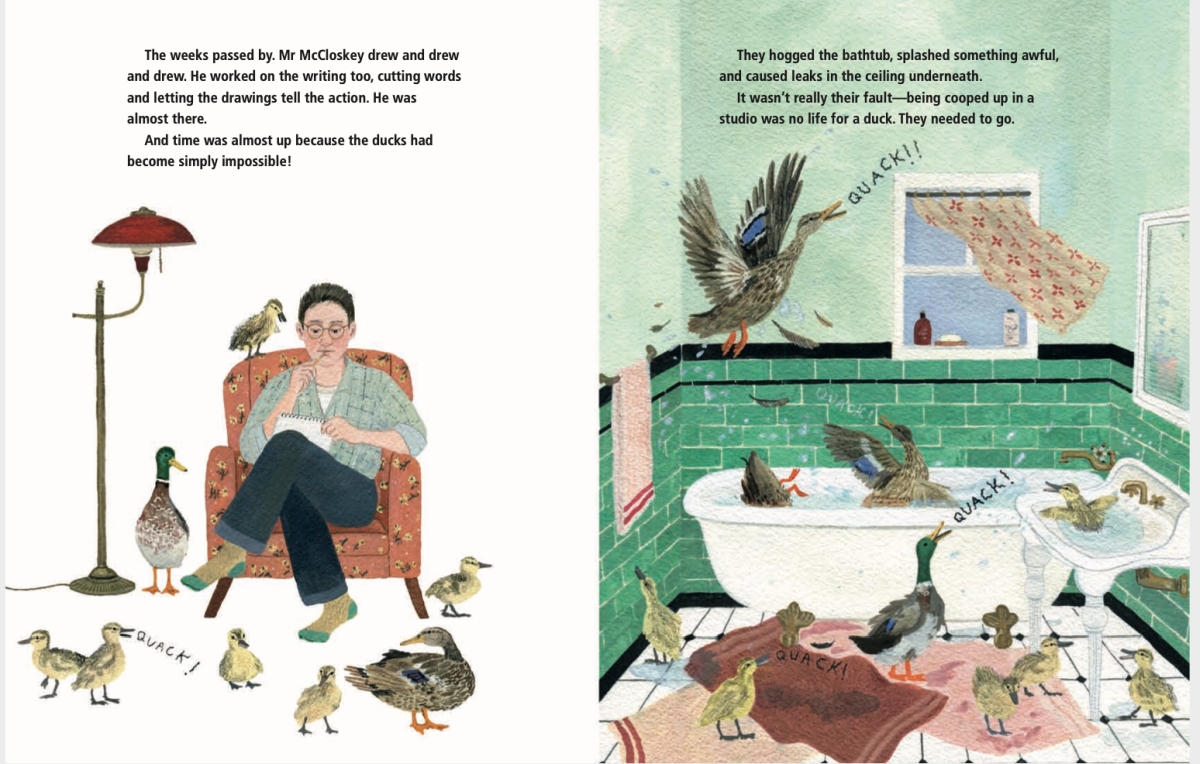
Illustration © Emma Stadtlander
JB: How do you see Mr. McCloskey’s Marvelous Mallards connecting to curriculum or being used in schools?
EBS: It would be interesting to see it used as a model for creating art. I grew up taking art classes where we drew a lot from life—going out into nature, for example—and I think perhaps teachers could use this book to teach that practice. In addition, whenever I visit classes, teachers will ask me to talk to the class about revising, and I will tell them that a book may have had 20 or more versions before I even showed it to my agent or an editor. I think teachers today are trying to teach students the importance of starting with a rough draft and making it better over many revisions. This story certainly attempts to get that across!
JB: What is one question you wish I had asked, and what is your answer?
EBS: Hmm, let’s see. How about this: “Do you read your manuscripts to your children to get feedback?”
And my answer: Yes, I always do, but I have to say that they’re not the best critique partners, because they always say, “I love it, Mom!” While that warms my heart, I have to say the best feedback I get is from the members of my two critique groups, who are a little bit tougher on me—and I’m grateful for that!
JB: What project are you currently working on?
EBS: My next book is a picture book biography of the cookbook writer and cooking teacher Fannie Farmer, entitled The Fabulous Fannie Farmer: Kitchen Scientist and America’s Cook. It is being published by Calkins Creek, the same publisher as Mr. McCloskey’s Marvelous Mallards, and the illustrations are by the wonderful Susan Reagan. I’m very excited about it! Interestingly, this will be my first book about a woman (I had three in 2022 about men). I can’t wait to share it with the world!
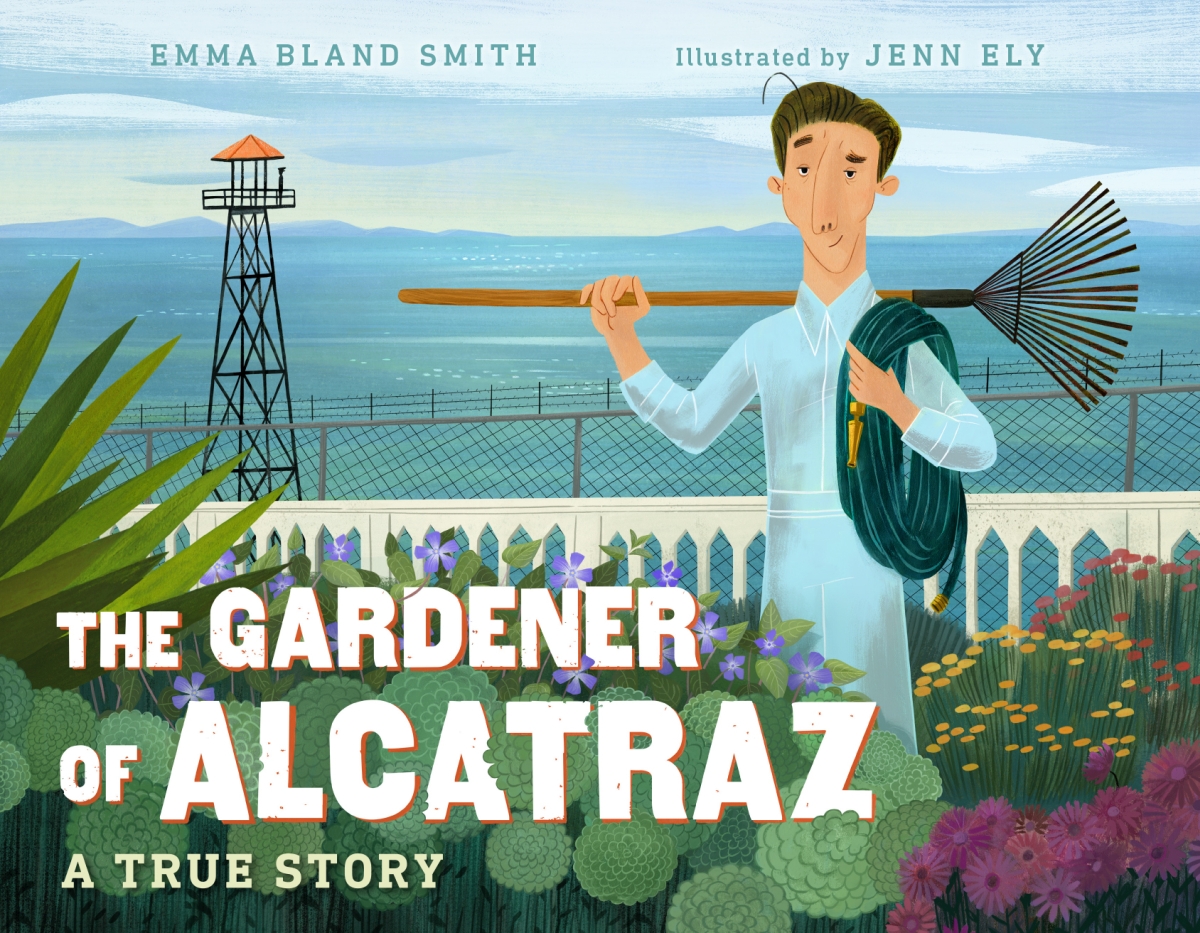
Junior Library Guild Gold selection
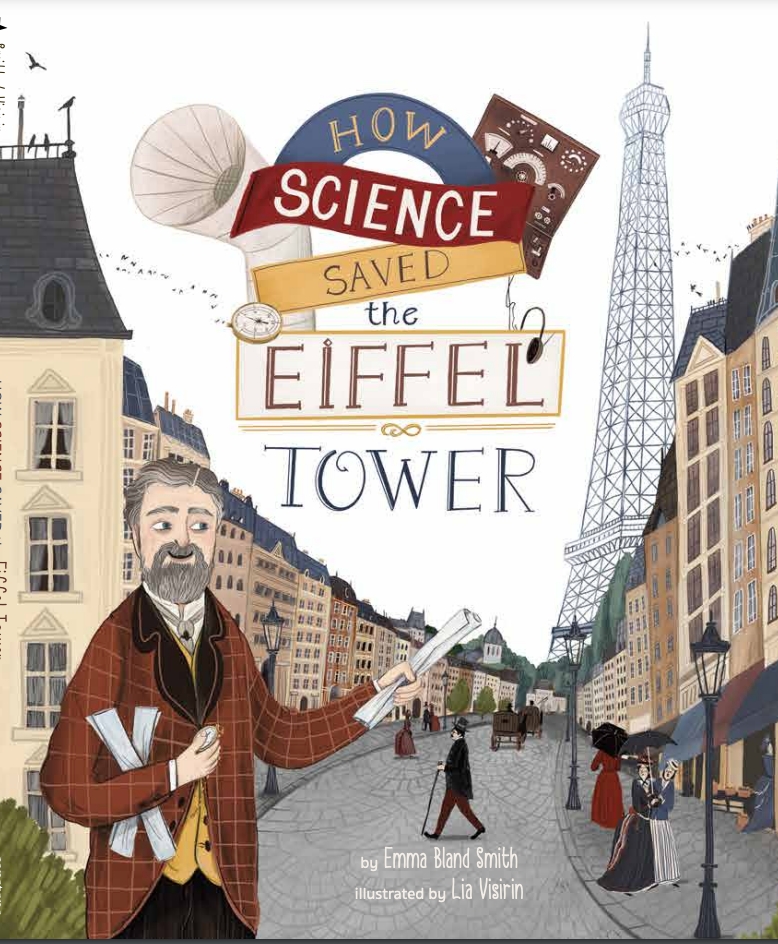
Starred Review, Booklist
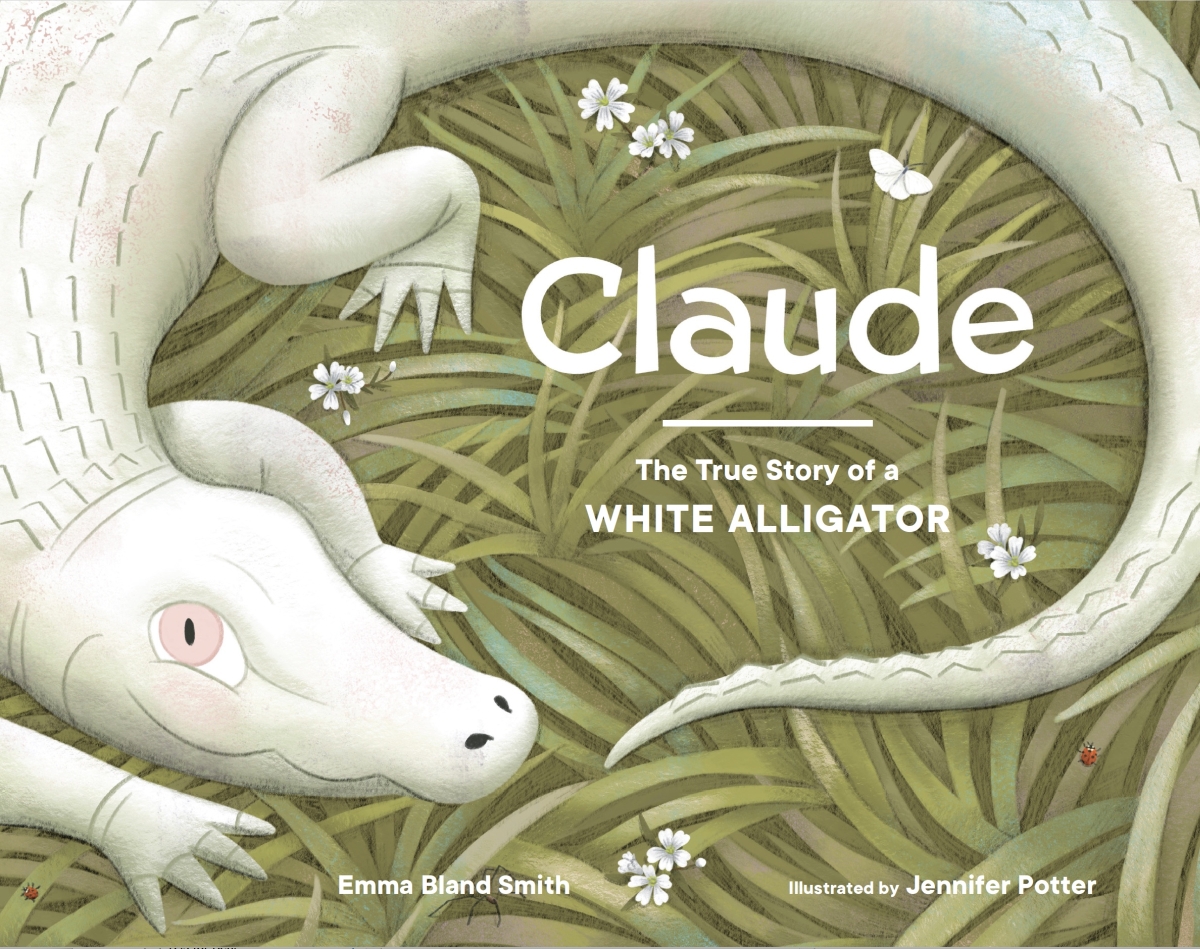
A Kirkus Best Book of 2020
About the Illustrator
Learn more about Becca Stadtlander. Connect with her on Instagram.
Sidebar Spotlight New releases of note
Each month I receive several boxes of books to review from various publishers. As I read and peruse the books, I place them in two piles: those that I will consider featuring on the blog, and those that don’t fit the mission or theme of Children’s Book Corner blog for whatever reason. I highlight some of the books in the “possible” pile on Mondays (most weeks) on Instagram. Ultimately, I choose the one new release I will feature on my monthly blog post. Yet there are many terrific books I wish I could give a shout-out to, even if I can’t write an entire post about each one. So, Sidebar Spotlight is a means of giving a nod to new releases that, in my opinion, are noteworthy. I’ve linked each title to Bookshop so you can learn more. Happy reading, friends! And feel free to comment on these books below.
- A Beginner’s Guide to Being Human by Matt Forrest Esenwine, illustrated by André Ceolin; accessible to primary grade children, this book explores empathy, kindness, patience, self-control, and what makes a family in a simple and engaging way that opens the door to meaningful discussion.
- Farmhouse by Sophie Blackall; a sweet and lyrical tale chronicling the life of a farmhouse from bustling to abandoned to celebrated in a beautifully rendered, thoughtful picture book.
- No World Too Big: Young People Fighting Global Climate Change edited by Lindsay H. Metcalf, Keila V. Dawson, and Jeanette Bradley; illustrated by Jeanette Bradley; a collection of poems paired with information about children across the world who are working to make a difference concerning climate change.
- Saturday at the Food Pantry by Diane O’Neill, illustrated by Brizida Magro; a simple but sensitive story about two classmates whose families visit the food pantry, and how each of them perceives the experience and impacts others waiting in line and each other.
- A Story Is to Share: How Ruth Krauss Found Another Way to Tell a Tale by Carter Higgins, illustrated by Isabelle Arsenault; picture book biography that sheds light on the life and creative process of the author of many classic children’s books.
- Still This Love Goes On by Buffy Sainte-Marie, illustrated by Julie Flett; beloved lyrics are stunningly illustrated; named a 2022 New York Times / New York Public Library Best Illustrated Children’s Book, and a Best Picture Book of the Year by Horn Book, Kirkus, The Globe & Mail, and the Chicago Public Library.
- The Sun Is Late and So Is the Farmer by Philip C. Stead, illustrated by Erin E. Stead; a sweet, reflective story in the vein of classic picture books perfect for bedtime, naptime, quiet time, anytime.
- We All Play by Julie Flett; spare text and simple illustrations feature animals at play for the youngest of readers; includes Cree names for each animal in the glossary, an author’s note, and audio pronunciations of the Cree words in the book are available on the Greystone Books.
News, Updates, & Items of Interest
It’s School Visit season, and I have been enjoying spending time with children who are curious about my characters and excited about reading and writing. Contact me for school visit information.
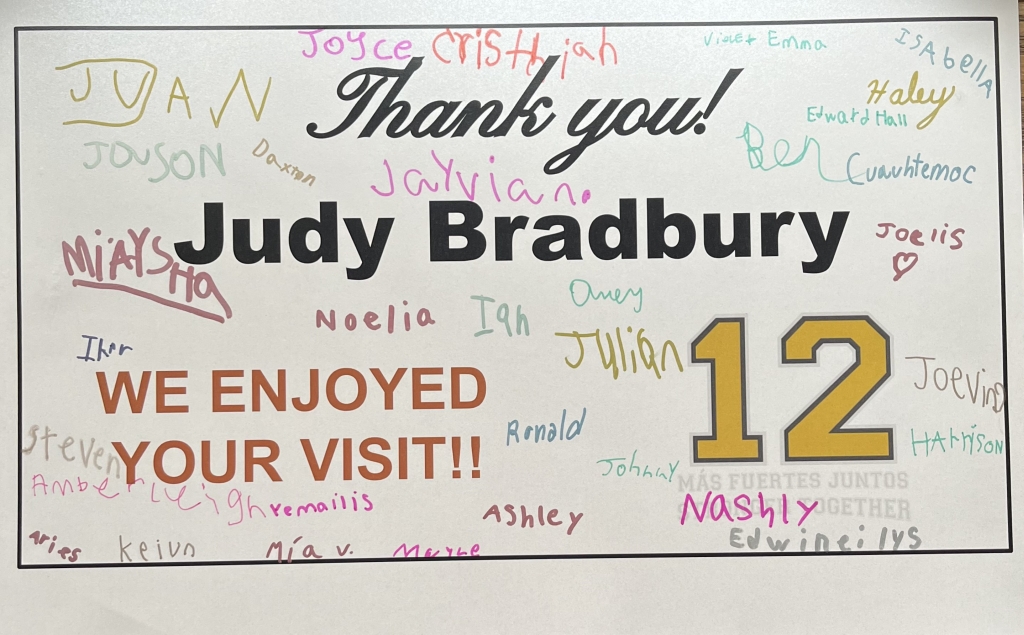
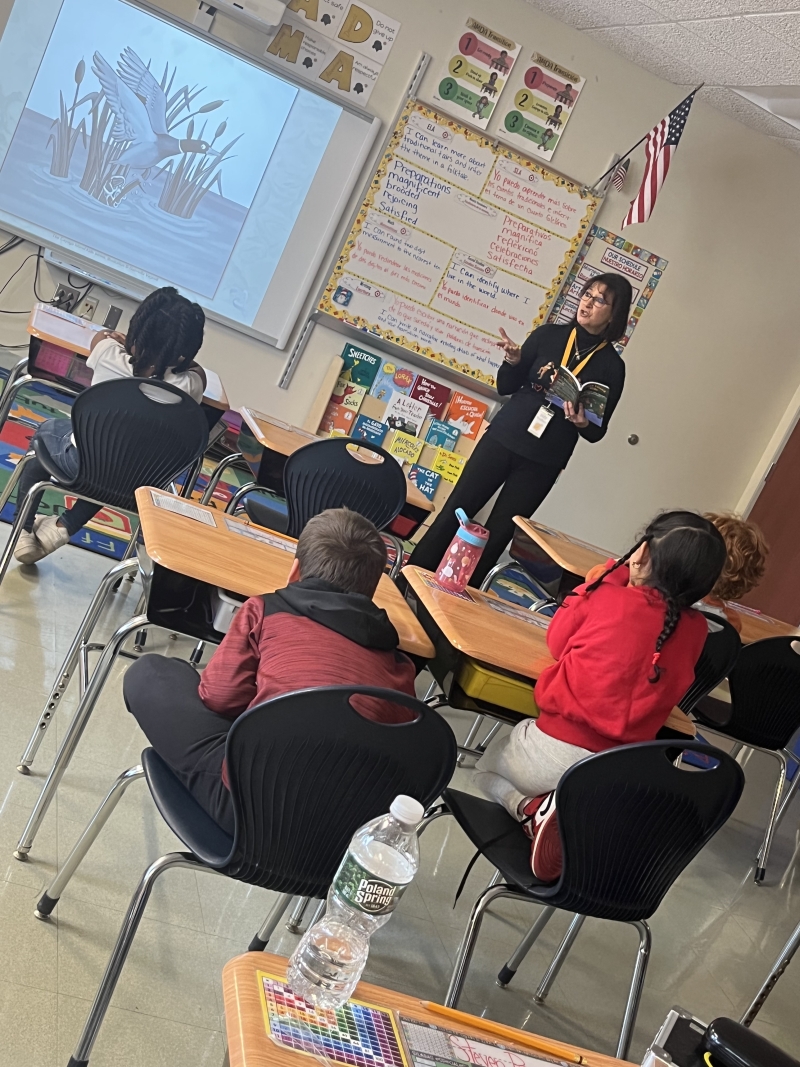
Read-aloud of a portion of Cayuga Island Kids Book 2, The Adventure of the Big Fish by the Small Creek
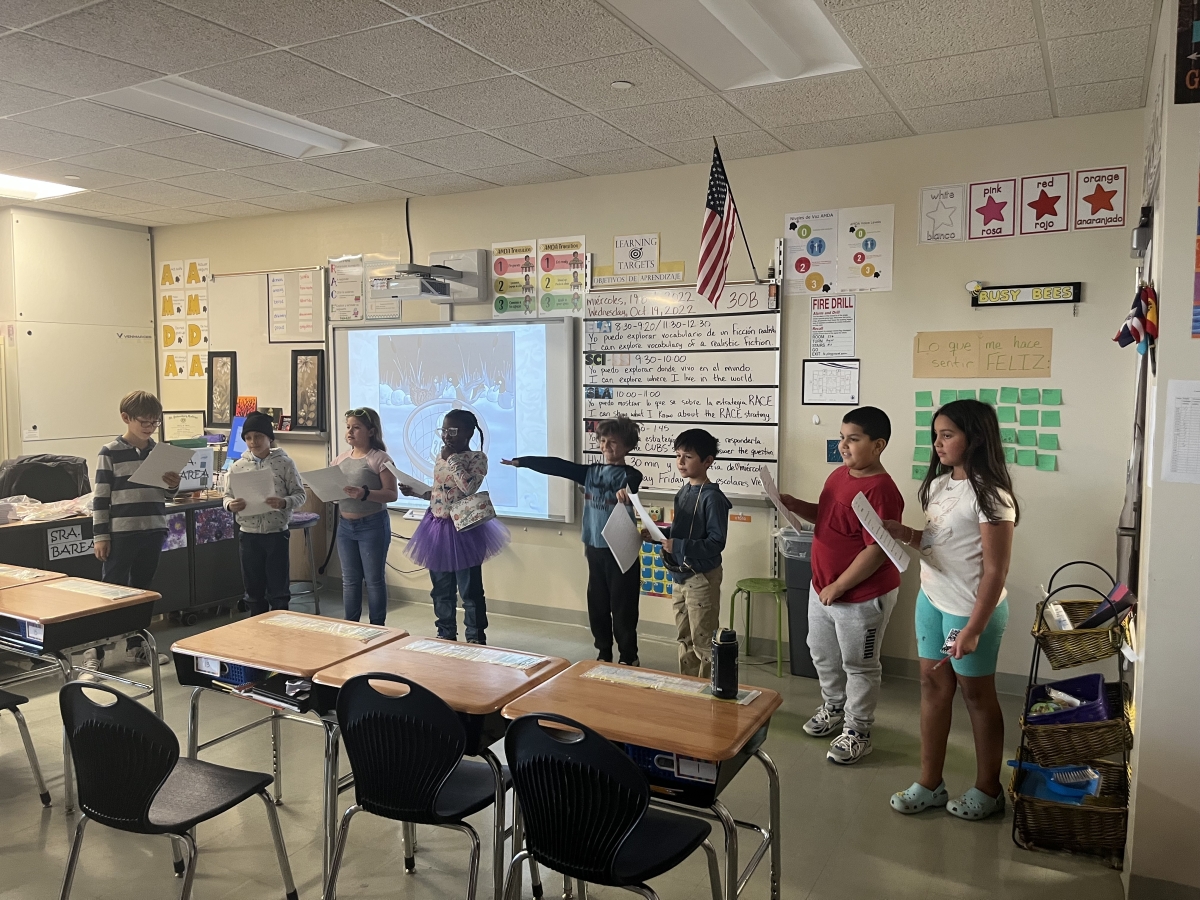
Readers Theater of an excerpt of The Adventure of the Big Fish by the Small Creek, complete with props!
Find where I’ll be appearing with my books on my Events page.
To celebrate the publication of The Case of the Messy Message and the Missing Facts, the third book in the Cayuga Island Kids chapter book series, I donated a Little Free Library for the park on Cayuga Island, the setting of the series. I placed a small notebook in the box for visitors to comment on the books they take and share. Imagine my delight when I found this note in the LFL recently!
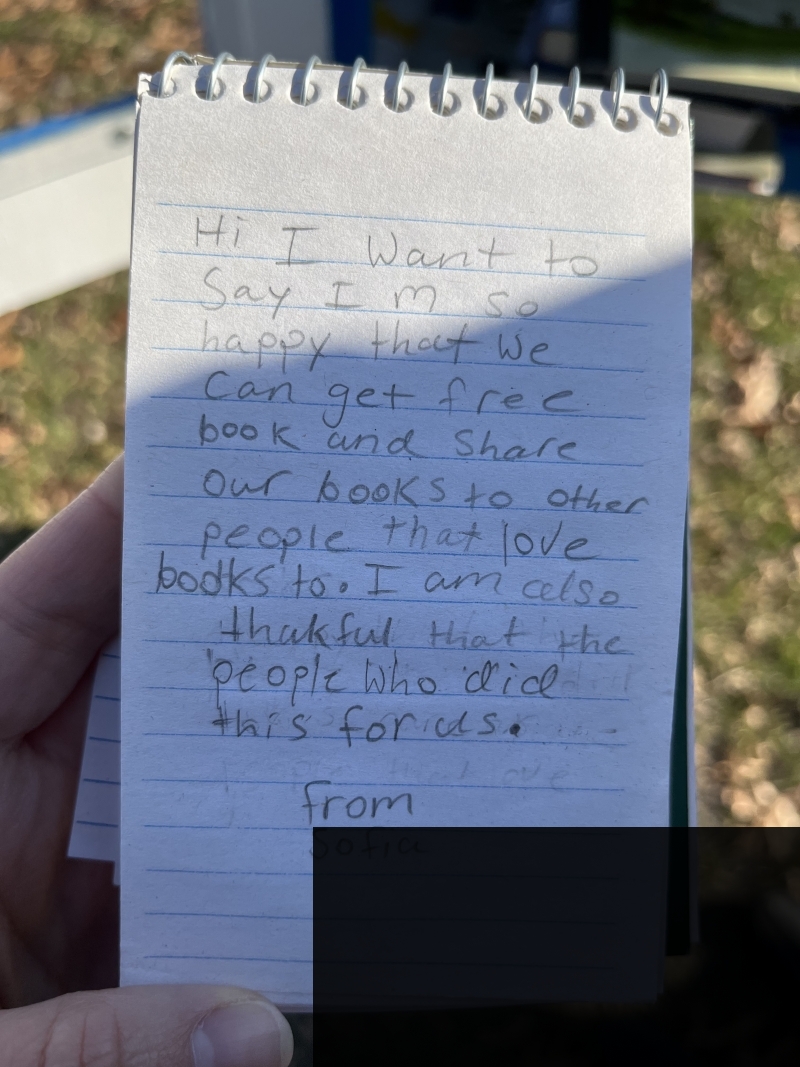
If you read and like a book, consider posting a review on GoodReads or on Amazon (if you bought it there). Authors and illustrators appreciate the shout-out. It increases visibility of their books. Also consider asking your local library to purchase a copy!
Free to use photos are available from the Library of Congress. Check out this vast resource.

Finally, the Niagara Frontier Reading Council is hosting a two-evening virtual event on the topic of censorship of children’s books on March 7 and March 21 from 6:00-7:30pm. The first evening will consist of a discussion of the book You Can’t Say That! Writers for Young People Talk About Censorship, Free Expression, and the Stories They Have to Tell compiled and edited by Leonard S. Marcus; on the second evening, the author will offer a visual presentation. Find more information here, and click to register here. NFRC and NYSRA members attend free. If you live outside New York State but would like to attend, and you are a subscriber to this blog, contact me for a special code to receive a discount to attend the event.
Over to You…
Join the conversation! Offer your thoughts on the featured question related to this month’s post:
What recently published picture book biography do you recommend? Share the title, author, and illustrator of the book in the comments section.
You are also welcome to post a general comment.
A copy of Mr. McCloskey’s Marvelous Mallards, courtesy of Calkins Creek/Astra Books for Young Readers, will be awarded to one lucky Children’s Book Corner subscriber who comments on this post!
Thanks for sharing!
Final Thought
“I have not failed 10,000 times. I have not failed once. I have succeeded in proving that those 10,000 ways will not work. When I have eliminated the ways that will not work, I will find the way that will work.” ~ Attributed to Thomas Alva Edison

